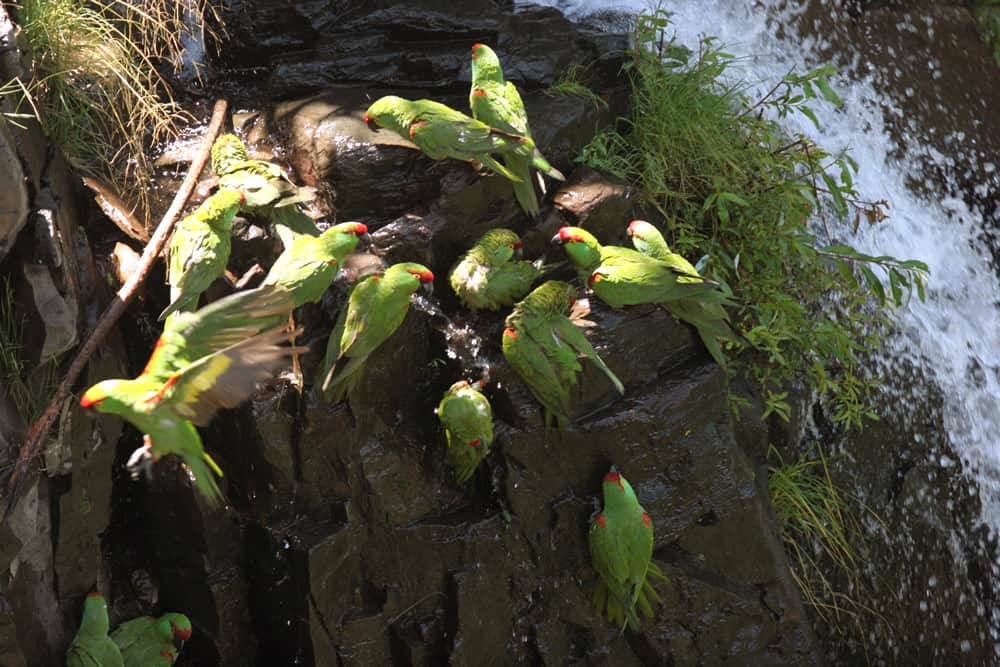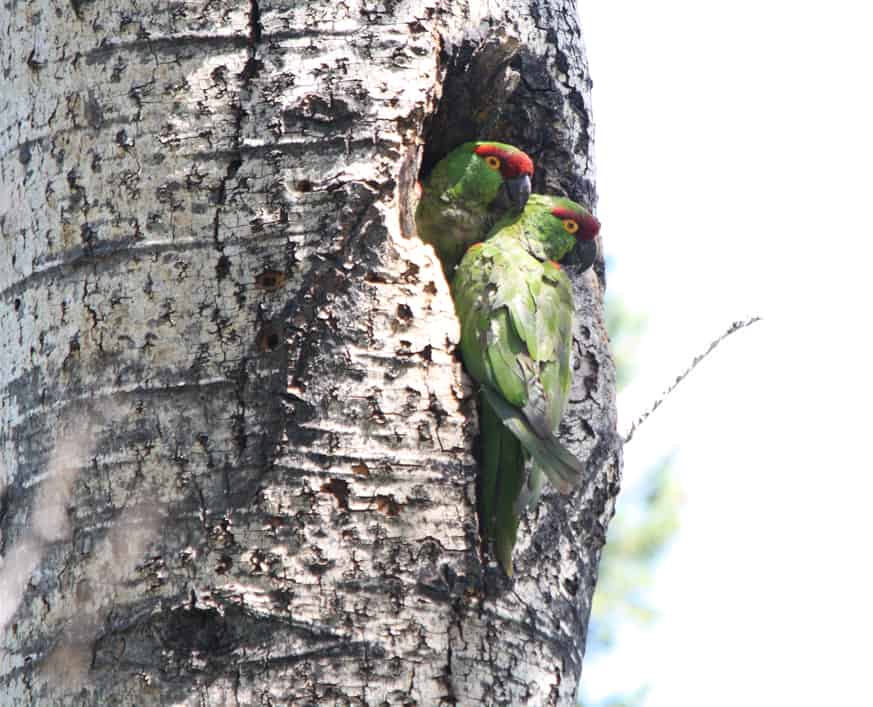By Edwin Juarez
Since 1996 Pronatura Noroeste A.C (Pronatura), Instituto Tecnológico y de Estudios Superiores de Monterrey (ITESM), and other partners have been working to conserve Thick-billed Parrot (Rhynchopsitta pachyrhyncha) populations and their habitat in Mexico. Through the years, ITESM and Pronatura have partnered with multiple agencies and groups from Mexico and in other countries, including Mexico’s National Commission of Protected Areas (CONANP), the National Forestry Commission (CONAFOR), Arizona Game & Fish Department (AGFD), San Diego Zoo Global, American Bird Conservancy, World Parrot Trust, and others, in support of this long running conservation program.
In response to the conservation interest on the species and the work that has taken place for the past two decades, Pronatura, ITESM, CONANP, and AGFD organized a binational planning workshop from April 24-25, 2014 in El Paso, Texas. The workshop focused on the conservation of extant populations and participants identified state of knowledge, information gaps, and conservation achievements, prioritized actions and outlined potential projects, identified collaboration opportunities with partners, and reestablished an informal binational working group on the species. An important outcome of the workshop was the prioritization of actions to advance habitat conservation and species research needs. For example, some fundamental questions remain unanswered such as: What is the extent of winter habitat and range? What routes do the parrots use to migrate?

The Thick-billed Parrot’s current range is limited to the Sierra Madre Occidental of Mexico, extending from northwestern Chihuahua and northeastern Sonora into Durango, continuing southward into Jalisco and east through the Transvolcanic Belt of Colima and Michoacán. The species migrates seasonally from its primary breeding grounds in the mixed conifer forests of Chihuahua to wintering areas farther south. Historically the species range in the U.S. extended as far north as the mountains of southeastern Arizona and possibly southwestern New Mexico. The last confirmed sighting of a naturally occurring flock in the U.S. was in 1938 in the Chiricahua Mountains of Arizona.
The species has experienced significant historical declines. Estimates vary on the number of Thick-billed Parrots in the wild, but in 2013 surveyors counted at least 1043 individuals across six sites. Both Mexico and the United States list the species as Endangered. As a species that was extirpated from Arizona in the 1930s, AGFD has either worked directly with the species or supported conservation efforts since the 1980s. The agency currently partners with Pronatura to support work in Chihuahua, among other collaborative efforts.

Workshop participants reviewed the strategies and needs identified in Mexico’s conservation plan for the Thick-billed Parrot, as well as those found in the US Addendum (coauthored by AGFD and the U.S. Fish and Wildlife Service—USFWS) to the Mexican plan. Conservation of the parrot is primarily focused on the need to protect, manage, and restore mature and old-growth conifer forests in Mexico, the species’ core range and where extant populations are found. As part of the Pronatura/ITESM conservation program (initiated in 1996), several old-growth forest areas in Chihuahua have been designated as protected areas. About 648 hectares of prime habitat within these designated areas enjoy greater protection as part of a Payment for Environmental Services scheme. Work on establishing conservation easements on additional hectares is underway. A key component of the program has been the successful participation of local communities (ejidos) in various conservation actions, including conservation easements, restoration activities, and monitoring of breeding sites. The Pronatura/ITESM field team annually monitors about six key breeding sites by assessing population numbers, reproductive success, extent of home ranges (by radio tracking), and health of nesting pairs and their young.

At the conclusion of the workshop participants resolved to revive an informal binational working group to provide follow-through on actions items, facilitate coordination, and collaborate on high priority projects. Mexican institutions and groups in attendance included Pronatura Noroeste, ITESM, CONANP, Consultoria Ambiental Agropecuaria Forestal y Financiera S de R.L de C.V, Universidad Autonoma de Chihuahua, and Ecologia y Comunidad Sustentable A.C, and from the US: AGFD, San Diego Zoo Global, World Parrot Trust, USFWS (including the Sonoran Joint Venture), Sacramento Zoo, Tulsa Zoo, American Bird Conservancy, New Mexico State University, Defenders of Wildlife, University of Colorado Denver, and retired biologist Noel Snyder. Special thanks to the San Diego Zoo Global and Sacramento Zoo for facilitating the use of translation services during the workshop.
For more information on workshop outcomes and the Thick-billed Parrot conservation program in Mexico, contact Francelia Torres or Edwin Juarez.

